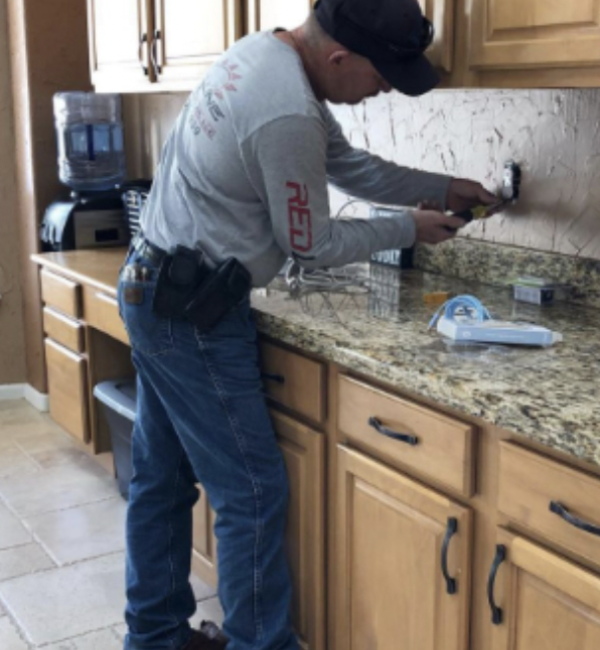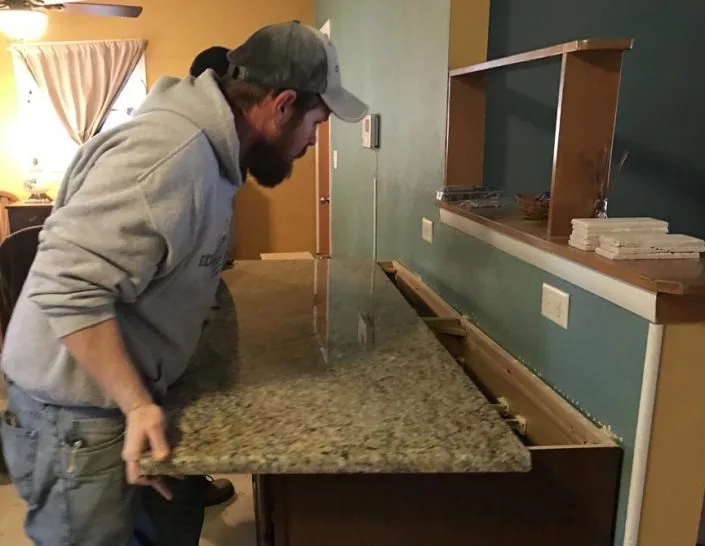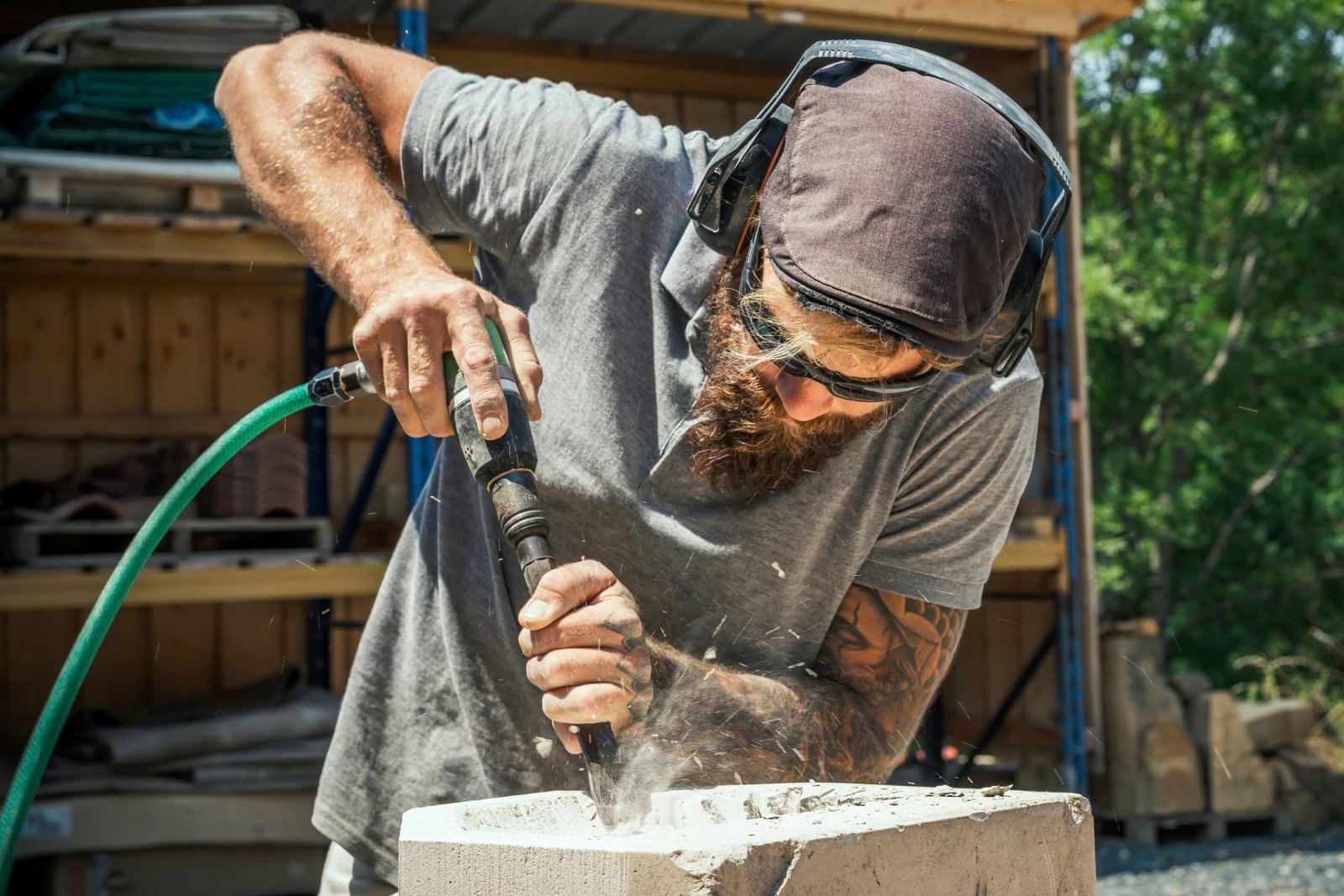
Installing a granite countertop is one of the most valuable upgrades you can make to your kitchen or bathroom.
Installing a granite countertop is one of the most valuable upgrades you can make to your kitchen or bathroom. Not only does granite offer unmatched durability and timeless elegance, but a proper installation ensures your investment lasts for decades. Whether you’re hiring professionals or exploring a DIY route, understanding the process is crucial for a flawless fit and finish.
This comprehensive guide walks you through everything you need to know about how to install granite countertops—from pre-measurement to sealing the final surface.

What Is a Granite Countertop?
A granite countertop is a custom-fabricated surface made from a granite slab, a natural stone prized for its hardness, heat resistance, and aesthetic diversity. Granite is ideal for both kitchens and bathrooms due to its long-lasting performance and wide variety of granite countertop colors and finishes.
👉 What Is a Granite Countertop?

Can You Install Granite Countertops Yourself?
While most homeowners opt for professional countertop installation, experienced DIYers with the right tools and support can take on this task—especially for smaller applications like bathroom vanities or islands. However, granite slabs are extremely heavy and require precise handling.
Professional installation is highly recommended for:
- Kitchens with multiple seams or corners
- Undermount sinks or custom cutouts
- Full slab backsplashes or high-end granite countertop design
Step-by-Step: How to Install Granite Countertops
Step 1: Prepare the Cabinets and Subsurface
Before anything else, ensure your cabinets are:
- Level within 1/8 inch
- Properly secured to wall studs
- Able to support the weight of granite (up to 20 lbs/sq. ft.)
Install a ¾-inch plywood subtop for 2 cm granite slabs. For 3 cm slabs, the granite can often sit directly on the cabinet frame.
Step 2: Create a Template
Accurate templating ensures the granite fits perfectly, especially around:
- Sinks
- Cooktops
- Wall edges
- Backsplashes
Use cardboard, thin plywood, or commercial template kits to mark the layout. Most professional installers use laser templating for precision.
Step 3: Select and Inspect Your Granite Slab
Visit a local fabricator or stone yard to select your granite slab. Look for:
- Consistent color and veining
- Cracks, pits, or imperfections
- The right slab size for your space
Tip: Lay out the template on the actual slab to decide the most attractive placement of patterns and veins.
👉 How Much for Kitchen Granite Countertop (Small vs. Large Kitchens)?
Step 4: Cut the Granite Slab
Cutting should be done with a diamond blade wet saw and safety gear. Slab cutting includes:
- Straight line cuts for edges
- Cutouts for sinks and cooktops
- Edge profiling (eased, bullnose, ogee, etc.)
Due to the complexity and dust involved, most granite cutting is performed offsite by professional fabricators.
Step 5: Dry Fit the Granite Countertop
Before sealing or adhesive:
- Carefully place the granite on the cabinets to test the fit
- Check seams, overhangs, and alignments
- Make any minor adjustments
Shims may be added beneath the slab to correct level inconsistencies.
Step 6: Apply Adhesive and Set the Granite
Use construction adhesive or epoxy to secure the granite to the cabinets or subtop.
- Clean the bottom of the slab and cabinet top
- Apply adhesive around the perimeter and center
- Lower the slab gently into place using suction cups or clamps
- Apply seam joiner or epoxy if multiple slabs are joined
Let adhesive cure as recommended by the manufacturer.
Step 7: Seal the Granite Surface
Most granite slabs are pre-sealed, but it’s recommended to apply another coat after installation.
- Use a high-quality penetrating stone sealer
- Apply with a soft cloth or sponge
- Let sit for 10–15 minutes, then buff dry
Repeat sealing every 1–2 years as part of regular granite countertop maintenance.
Granite Countertop Installation Costs
If hiring a pro, installation usually costs $35–$85 per hour, or is included in the granite countertop prices (usually $50–$100/sq. ft. installed).
👉 What Is a Good Price for Granite Countertop Installed?
Granite Countertop Cleaning and Aftercare
Once installed, caring for your granite surface is simple:
- Clean daily with mild soap and a soft cloth
- Avoid bleach or acidic cleaners
- Reseal every 12–24 months
- Use cutting boards and trivets to protect the surface
Routine granite countertop cleaning helps preserve shine and stain resistance.
Tools and Materials Checklist
If you’re DIYing your granite countertop installation, you’ll need:
✔️ Safety goggles & gloves
✔️ Wet saw with diamond blade
✔️ Level and shims
✔️ Adhesive or epoxy
✔️ Seam setter (for multiple slabs)
✔️ Granite sealer
✔️ Suction cups or clamps
✔️ Caulk for backsplashes
Note: Due to weight, always work with at least two people to lift and place granite.
Final Thoughts
Installing a granite countertop requires precision, planning, and strength. Whether you’re working on a new build or replacing an old surface, knowing the steps involved ensures a successful outcome.
If you’re not confident in handling heavy slabs or cutting stone, hiring a pro is your best bet for a flawless finish. Either way, granite offers exceptional durability, beauty, and long-term value.

